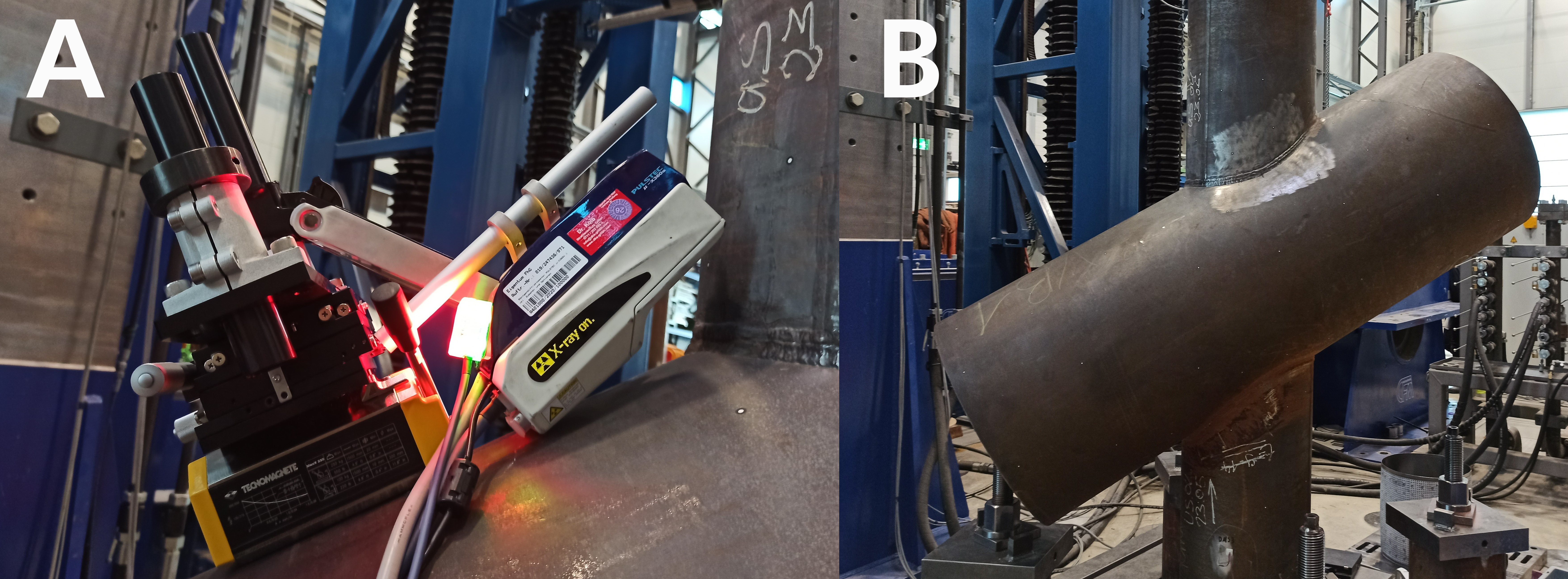Determination of residual stresses on large casing pipe structures

The determination of residual stresses in offshore wind farm structures has thus far been extremely difficult – if not impossible – due to the complex component geometry and long measurement times. Fraunhofer IWM is now able to efficiently measure the course of critical tensile residual stresses at the weld transition of jacket tube structures using X-ray diffraction via the use of a handy diffractometer positioned directly on the component. This shows that it is possible to determine very local residual stresses on large components. Offshore wind farm structure models at a scale of 1:1.5 or 1:2 were stored in a test hall at Fraunhofer IWES for component testing on land. At weld transitions in particular, a coarse-grained microstructure, damaging tensile residual stresses and even cracks can occur due to the temperature control introduced by welding. Only by understanding the complex interaction of residual stresses, material strength, structural integrity and external load can the full potential of the material be exploited. Knowledge of the influence of residual stresses is of great importance for calculating the fatigue strength of welded joints. The measurements were carried out on-site on one unloaded and one loaded model of an offshore wind farm structure with a height of up to 3 m. Tensile residual stresses of up to 250 MPa were determined at the weld transition of the unloaded structure. Lower tensile residual stresses were present at the weld transition of the loaded structure. In the next step, fatigue tests will show whether fatigue cracks occur in areas of high tensile residual stresses.
Schubnell, J.; Carl, E.; Widerspan, V.; Collmann, M., Determination of loading and residual stresses on offshore jacket structures by X-ray diffraction, Journal of Marine Science and Engineering 11/7 (2023) Art. 1304, 10 pp. Link
 Fraunhofer Institute for Mechanics of Materials IWM
Fraunhofer Institute for Mechanics of Materials IWM